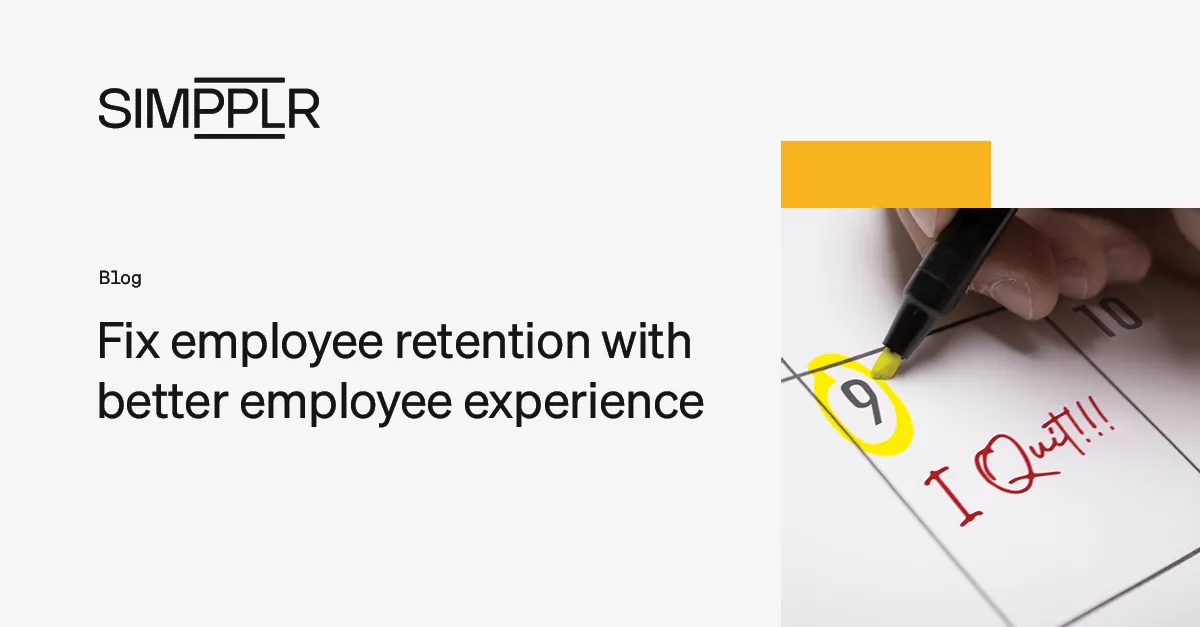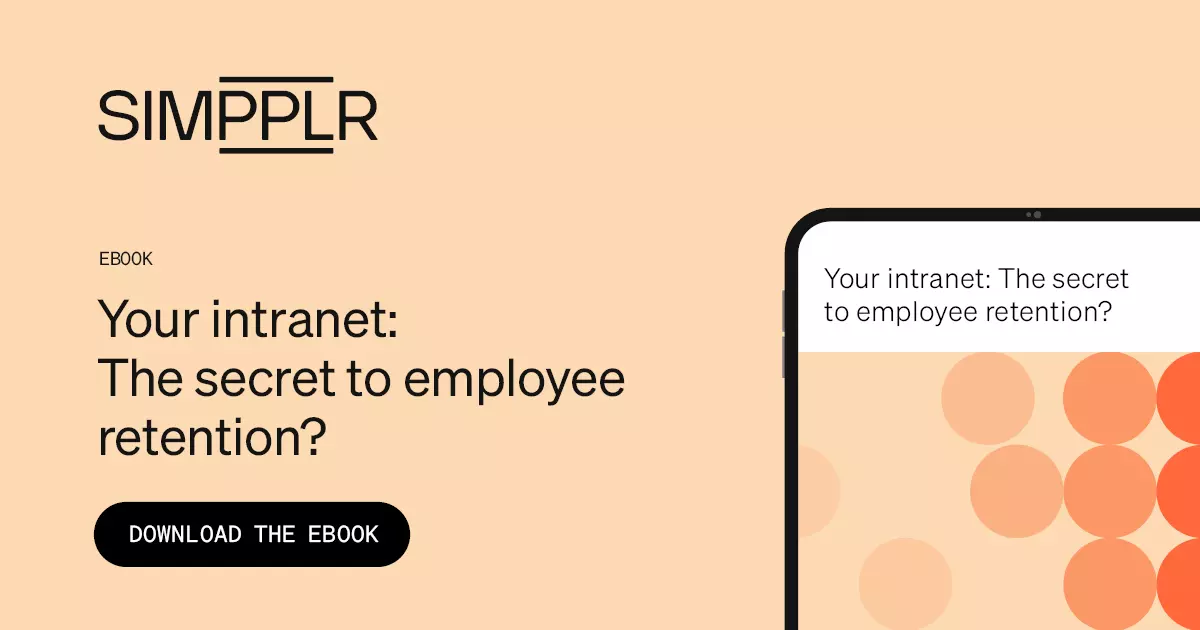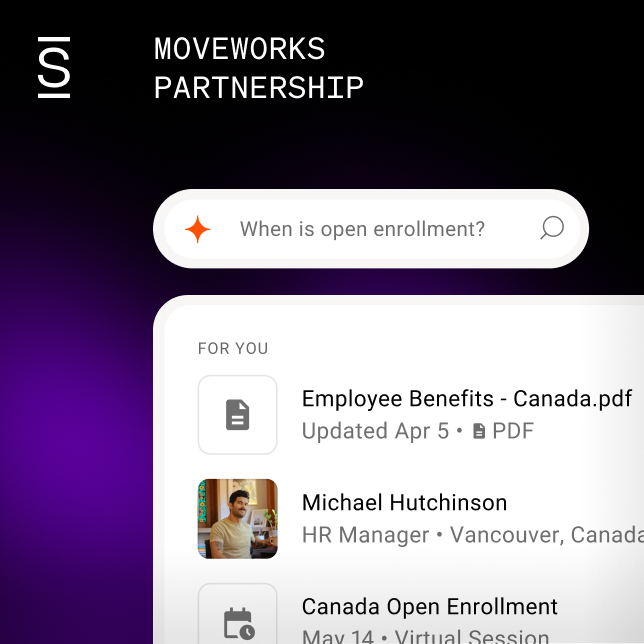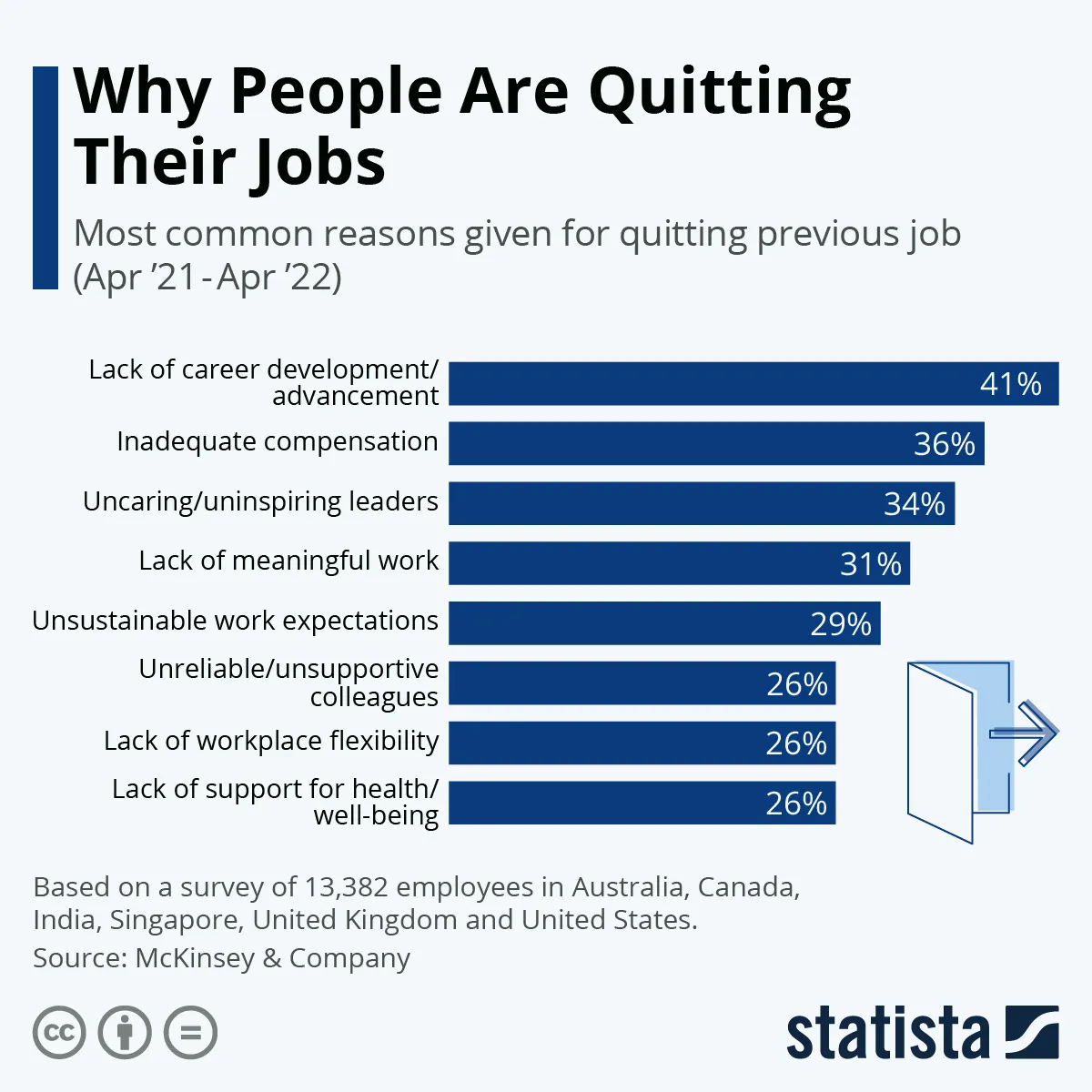Today’s job market is fiercely competitive, and keeping the best employees on your team is definitely a top-of-mind concern. After all, a business incurs significant expense, decreased productivity, and damage to customer service when there’s a high employee turnover rate. So, we have some proven strategies to share that will help increase retention rates and prevent this drain on resources!
Companies generally consider a high employee retention rate a positive sign, suggesting that employees are content with their jobs and will likely remain longer. Conversely, a low employee retention rate indicates there are problems. These include low morale, weak management, or a lack of opportunities for growth and development. And it’s important to quickly identify the culprit.
The average cost of replacing an employee is 1.5 – 2 times their annual salary, according to the Society for Human Resource Management (SHRM). And research by the Bureau of Labor Statistics shows that the average employee turnover rate in the United States is reaching 13%. Even worse, as they’re always the one to buck averages, a Deloitte study revealed that millennials’ turnover rate is even higher, at 21%.
Hence, business owners, managers, and employees need to implement some simple strategies to head this off. Starting on the first day of new employee onboarding, they must create working conditions that support a high retention rate.
Let’s start with the reasons for high employee turnover so we know what to watch out for.
Reasons for high employee turnover
In the United States, there has been a significant increase in the number of employees quitting their jobs voluntarily, with a 25 percent higher rate from December 2019 to May 2022 compared to pre-pandemic levels. As a result, employers and entire industries face substantial gaps that must be filled.
A study by McKinsey & Company conducted in Australia, India, Singapore, Canada, the United Kingdom, and the United States revealed that 65% of employees who resigned from their jobs between April 2020 and April 2022 did not return to the same industry.
A high employee turnover rate within a company over a specific timeframe, as opposed to a reasonable retention rate, impacts a company’s growth. This can result in expensive issues, including reduced employee productivity, increased expenses, and a negative impact on customer service.
Therefore, it is crucial to understand why employees leave so quickly and strategic steps that can be taken to improve employee retention. The reasons the leave can include:
- Compensation and benefits: Employees want to be fairly compensated for their work and access good benefits. The employee value proposition (EVP) should be clear, consistent, and competitive! If employees feel like they need to be paid more or their benefits are not aligned with the industry, they’ll find an EVP that resonates elsewhere.
- Work-life balance: Employees want to balance their work and personal lives. They may be more likely to leave if they feel like they are working too much or do not have enough time for their family and friends.
- Opportunities for growth and development: It is vital for employees to feel that their careers are advancing and that they are making progress in their professional development. They’ll leave if they feel like they are not being challenged or do not have opportunities to advance.
- Management style: Employees want to feel respected and that their opinions matter. They may be more likely to leave if they have a terrible relationship with their manager or aren’t managed effectively. A toxic work culture is not attractive to top talent.
- Company culture: Employees seek to work for a company that shares their values, beliefs, and principles. They may be more likely to leave if they do not feel like they belong or are not proud to work for the company.
- Job satisfaction: Employees want to be happy with their jobs. If they are unsatisfied with their work, colleagues, or overall work environment, they may be more likely to leave.
- Lack of workplace flexibility: Employee turnover rates can increase when there is a lack of flexibility, such as rigid schedules or limited opportunities for remote work.
- Lack of support for health and well-being: Turnover rates can also be higher when there is a lack of support for employee health and well-being, such as inadequate benefits or a stressful work environment.

Reasons employees stay
Although many employees aspire to stay with a company longer, they quickly switch jobs when they feel they need to be more appreciated and challenged. Conversely, employees can display loyalty when they are treated well. The following factors are often cited as reasons for employees to stay with a company:
- Competitive salary
- High level of engagement
- Flexible work schedules
- Clear career progression within the organization
- Opportunities for learning and development
- Comprehensive benefits
- Supportive and empathetic management
- Respect and appreciation.
- Excellent company culture and team
- Support for the company’s mission
Employee retention and turnover aren’t synonymous concepts, but each is often mentioned as they both describe how long an employee stays or leaves a company over time.
There are two categories of employee turnover:
- Voluntary turnover is when an employee voluntarily decides to resign from their job, possibly as a result of reasons such as job dissatisfaction or burnout.
- Involuntary turnover arises when the employee is terminated, often due to poor performance or misconduct.
Analyzing these two measures reveals which employees are willing to stay within the organization and how long they last. It helps hiring managers make informed decisions about the candidates and improve internal areas that are lacking.
Strategies to improve employee retention
How can organizations keep employees satisfied and prevent them from leaving? Here are 14 strategies to get you started.

1. Promote employees
There is a high chance that employers who invest in their employees’ professional growth will see a 94% retention rate, according to LinkedIn. In today’s market, they desire to grow and improve their skillset; hence, mentorship programs and further education are great ways to facilitate this.
2. Focus on managerial inputs
There is a saying: “People don’t quit jobs; they quit bosses.” Have you heard it? Goodhire estimated that 82% of Americans leave their jobs due to bad management. Companies should include employee experience management skills in performance appraisals and train and coach managers at all levels, including first-time supervisors.
3. Appreciate employees
Everyone wants to feel appreciated, particularly at work. In a 2022 Gallup poll, workers who feel appreciated are 56% less likely to hunt for new jobs. Only 19% of workers think their company has a good recognition culture though. Employers should value the input of their employees more often.
4. Reevaluate compensation
Wages are a significant reason why most people work diligently at their jobs. If they feel underpaid, valuable employees will leave. According to Monster, transparent wages and a straightforward pay policy attract workers. It is essential to reassess industry remuneration norms regularly, and rewarding top performers is crucial. Spot bonuses and regular compensation increases make employees feel appreciated.
5. Evaluate benefits
According to Forbes, perks are the most significant non-salary element for roughly 6 in 10 workers. Lower healthcare charges or more parental leave might make the difference between remaining or leaving a job. Flexible workplaces drove retention before COVID-19. Employee advocacy and loyalty depend on companies’ willingness to meet workers’ requirements.
6. Balance work-life
Work-life balance matters. The rise of remote work and flexible scheduling has helped employees manage the stress of commuting daily and has significantly impacted this balance structure. Managers should check in with staff to ensure they don’t have too much on their plates and promote open discussion regarding workloads.
Meetings and administrative tasks that waste time might also be removed to ease the pressure. If workloads become excessive, employers should consider the expense of additional workers. It’s often more beneficial long-term when weighed against attrition.
7. Growth opportunities
Employees must keep up with the fast-changing workplace or risk falling behind. Many fear their employers don’t provide promotions, career development, and advancement. Thus, they seek opportunities outside the company.
McKinsey & Company found that lack of professional growth and progression was the main reason individuals departed companies between April 2021 and April 2022.
8. Improve company culture
Despite its subjectivity, corporate culture affects retention. Company culture influences workplace satisfaction. Strong company cultures share qualities like:
- Respecting and listening to workers
- Demonstrating inclusive leadership
9. Prioritize hybrid and remote options
The new normal is remote and hybrid work. According to a 2022 ADP study, 64% of Americans would consider switching jobs if forced to work in an office full-time. Employers should provide remote and hybrid choices wherever feasible. Requiring core in-office days or periodic in-office meetings might provide a shared workplace the collaborative advantages without rigidity.

10. Flexibility
Beyond flexible scheduling and remote work, employee retention methods today require more. Giving employees the flexibility to attend to family caregiving, medical needs, or even personal errands during the workday can make them feel more empowered and capable of meeting their responsibilities. The number of hours worked may stay the same, but flexibility is what’s important here.
11. Empower employees
Unpleasant workspaces lower morale. Fixing a broken computer or outdated software might be precisely what’s needed to empower frustrated and overworked staff. Employers should help workers get the tools they need to be productive all the time.
12. Promote employee health
Nearly half of the workers report feeling burnt out, with no improvement since the pandemic. This is due to increased costs, complicated personal lives, and political and economic uncertainty. Providing adequate workloads, open lines of communication with management, and a healthy corporate culture are the best ways to prevent burnout. Businesses may also want to assist their workers with physical and emotional well-being.
Wellness payments like gym memberships or massages, mental health insurance coverage, and access to digital wellness or meditation platforms may help workers feel refreshed. Also, insurance schemes covering regular wellness checks could be incorporated with little fees and chargebacks if not used monthly.
13. Teambuilding
Less in-person work patterns can foster stronger teamwork among employees. Satisfaction and loyalty are strongly and sometimes largely dependent on the workplace community. Effective team collaboration and communication can happen virtually, boosting value delivery and overall work output. There’s a saying that applies: “When we go together, we go further.” This is why companies need an internal communication system, such as an intranet, to facilitate corporate communications and organize these group efforts.
14. Give workers a purpose
Many workers aspire to make a difference in their employment and personal lives. McKinsey & Company found that workers who believe their personal mission matches their company’s mission are more engaged and loyal.
By expressing its global significance, leadership may help workers connect with their company’s mission. For instance, hosting town hall meetings or small group talks about improving customer experience and acting on workers’ suggestions will help them feel like they’re directly influencing or impacting the company’s direction.
How to track, measure and evaluate employee retention
There must be more than knowing the right strategies to implement employee retention. A thorough process must be in place to track how well these strategies are working. This saves time and reveals if there is a need to devise other means. To track and evaluate employee retention, consider the following:
- Establish clear metrics: Identify the factors contributing to employee retention and set measurable goals to track progress.
- Collect feedback: Conduct regular surveys or interviews to gather employee feedback about job satisfaction, work environment, and other factors impacting retention.
- Analyze data: Use data to identify trends and patterns in employee turnover rates and retention rates. There are prescriptive analytics tools that help gather and make inferences easily within the digital workplace.
- Review policies and programs: Review current retention strategies and programs to determine their effectiveness and make necessary adjustments.
- Continuously improve: Use the insights from analyzing data and feedback to improve retention efforts and maintain a high-performing workforce.
- Regularly assess retention efforts: Regularly evaluate the effectiveness of retention efforts to ensure they are meeting organizational goals and improving overall employee retention.
With the job market constantly evolving, regularly assessing and improving retention efforts is essential to staying competitive and attracting and retaining top talent in the industry.
Employee retention is critical to any organization’s success, and creating a positive employee experience is vital to achieving this. A well-designed intranet platform by Simpplr, with its several integrations and APIs, can significantly enhance employee engagement, communication, and collaboration. Ultimately, this can lead to substantially improved retention rates in the workplace.
Employee experience packages, advanced internal communication capabilities, and prescriptive analytic tools are tailored to meet the unique needs of each organization it serves. There’s a focus on creating a unified employee experience that fosters engagement, improves communication, facilitates data gathering, and encourages collaboration.
Investing in an AI-powered intranet platform is the first step toward creating a positive work environment that enables employees to be more productive, efficient, and satisfied, leading to a higher retention rate. Request a demo to get started now!






















